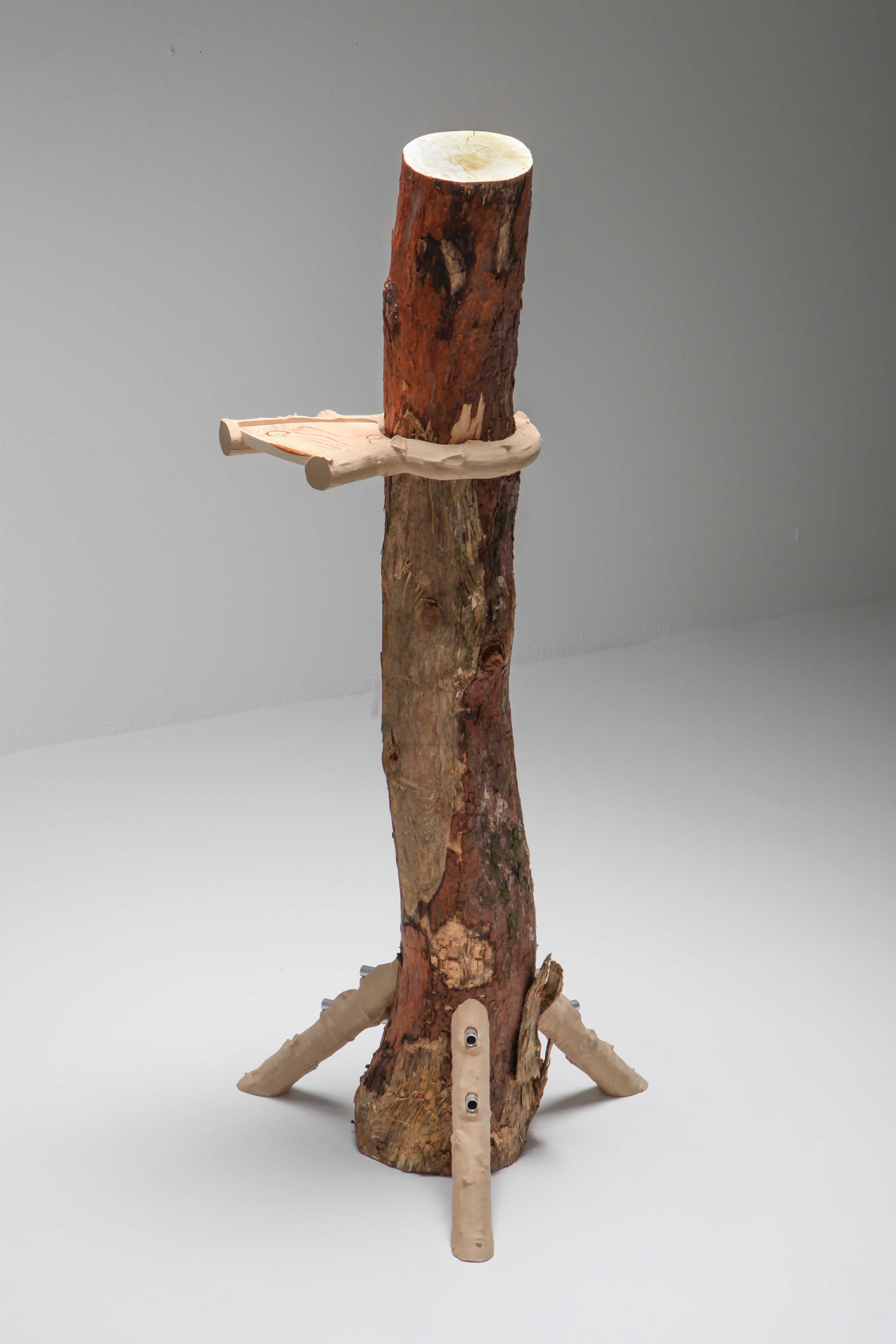Solo show at Everday Gallery in Antwerp
Collaborative Project with Janne Schimmel as Schimmel & Schweikle
Rooted in material theory, Schimmel and Schweikle’s new series of works examines wood and its relationship to human progress, taking a close look at how it’s historical, cultural and political narratives have shaped the way we think of design for centuries. Exploring the space between 3D modelling and craft, they examine the hierarchies between the hand made and the digitally manipulated. Simulated wooden ornaments assume a contiguous relational form to the texture they are mimicking, indistinguishable from the original, except for the thin lines that give away its 3D printed manufacturing. Wooden shelving in the shape of a branch, so perfectly tree-like that it replicates itself; the branches organic bulges repeated as if it were a block print. The pieces invite us to reconsider which form would qualify as ‘more real’, an algorithmic search engine might decide on the 3D printed branches, as the articulation of physical properties that are attributed to wood are so impeccably pronounced in this digitally produced form. Baudrillard predicted that the simulation will become realer than the real, yet in the work of Schimmel and Schweikle they remain equals, assisting each other in function and form.
Text by Tenant of Culture
















